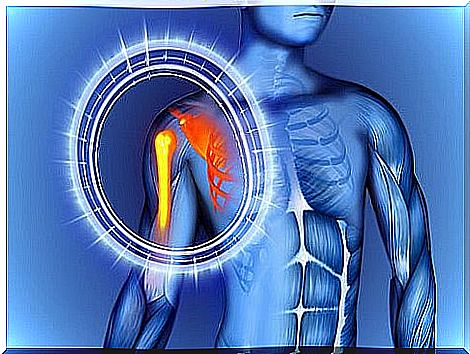Osteonecrosis Or Avascular Necrosis: Causes, Symptoms And Treatment
Osteonecrosis is a bone infarction, it is also known as avascular necrosis. It is produced by the lack of blood supply to the bones.

As a general rule, the term osteonecrosis or avascular necrosis is used to refer to a bone infarction that is caused by the lack of blood supply to some region of the bones.
Therefore, osteonecrosis occurs, that is, cell death of the affected area occurs. Other names that are also common are aseptic necrosis and ischemic necrosis.
On the other hand, studies have shown that this medical condition tends to affect certain bone structures more. For example, we can highlight the head of the femur and humerus, the mandible or the tibial region, among others.
What are the causes of osteonecrosis or avascular necrosis?
At this point we include factors that can cause the interruption of the blood supply to the area. Among the most common causes we can find:
- Fractures and dislocations : It is called a fracture to the break of a bone and dislocation to the displacement of a bone outside its joint. Thus, these disorders can impede the activity of the arteries in the area.
- Practice of unhealthy or harmful habits : in particular, alcohol abuse is directly related to an increased risk of developing osteonecrosis. However, the mechanism or how this factor influences is still unknown.
- The use of certain types of medications : above all, chronic treatment with corticosteroids represents a risk factor for this pathology. As a general rule, they are drugs used as therapy in subjects with autoimmune diseases.
- Other medical conditions : we can highlight some blood diseases, chronic kidney failure, cancer treatments such as radiation therapy and certain rare diseases, among others.
What are the symptoms of osteonecrosis or avascular necrosis?
Generally, patients with avascular necrosis do not develop or present any symptoms in the early stages of the disease.
In this way, a large number of clinical cases have been diagnosed incidentally thanks to internal imaging for another cause.

Likewise, the identification of the disease is usually carried out through tests such as radiography, bone scan, magnetic resonance imaging (or MRI) or computerized axial tomography (CT). The medical team will also perform a physical examination to check the symptoms and a study of the subject’s medical history.
On the other hand, there are a series of symptoms or signs that can be associated with this medical disorder. Among them are:
- Pain or discomfort : they can vary in terms of location and intensity depending on the characteristics of the patient. It usually appears in the hip, groin, or nearby areas such as the buttocks. It appears when carrying weight or doing vigorous physical activities. However, pain can occur even at rest.
- Development of lameness : due to the discomfort that the patient may present. It is closely related to the early stages of femoral head necrosis.
- Loss of functionality : of certain body regions.
What is the treatment for osteonecrosis or avascular necrosis?

Finally, the specialists will recommend the best options for treatment to the patient. However, the subject must always give their consent before carrying out any type of therapy. Thus, guidelines within treatment for avascular necrosis typically include the following.
- Medication administration : we find drugs to calm the discomfort (analgesics) but bisphosphonates can also be used. In the latter case, these are drugs that must be controlled since they can cause very harmful side effects.
- Get rid of alcohol intake : but also other bad habits.
- Moderate rest : the patient should be prevented from resting in non-physiological positions, even if they are more comfortable to avoid aggravating the injury.
- Use of crutches : to avoid overloading the affected joints.
- Practice of surgical interventions : in this case, the surgery can be divided into
- Decompression or removal of part of the head of the femur.
- Healthy bone graft in the problem region.
- Placement of joint prosthesis. It is performed in cases where bone destruction is severe and especially in the hip.
We hope this article has allowed you to know a little more about osteonecrosis. Always remember to follow the doctor’s instructions and go for a check-up for any symptoms mentioned above.









